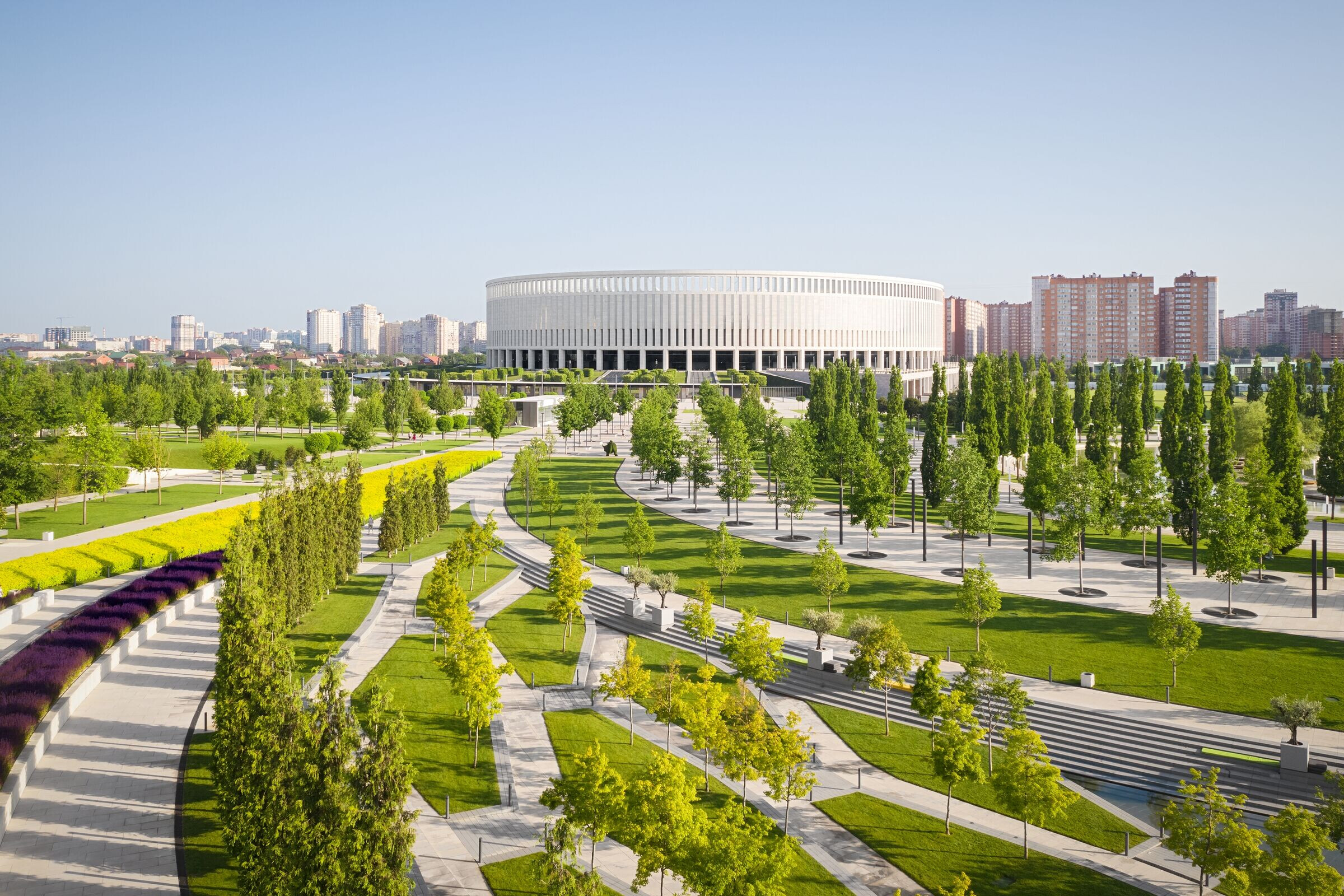The multifunctional park in Krasnodar, the metropolis in the south of Russia, is adjacent to the open spaces of the stadium that was designed by gmp for FC Krasnodar. The 34-hectare site has been designed for about 1,800 visitors. The park, which was completed in five stages, has been an immensely popular leisure destination for open-air sport and recreation ever since the opening of the first section in 2016.

The design represents a continuation of the football arena in form and content: a series of circles and curves that can be seen as a graphical image from the stadium’s circular walkways is transformed into a modern, lively landscaped park. A meandering pathway system leads through the different areas for sports events and recreation that flow one into the other. These include generous ramps and open stairways that are also used as grandstands for stage and film performances, an amphitheater, water areas that are converted into ice-rinks in winter, as well as a wide variety of play and sports facilities with one of the most up-to-date skateparks in Russia. At the center of the park, a spiral-shaped ramp leads to a viewing point.

The light-colored natural stone of the pathways and structures resonates the materials and colors used for the stadium, so that architecture and park melt into one. The circular mounds also fulfill logistical functions for the operation of the stadium. Beneath the sculpted landscape are hidden technical facilities for the stadium, as well as public function rooms such as restaurants, WCs, and changing rooms serving the open-air stages. The landscape has been modeled with vertical differences of up to 6 meters and rises towards the boundary of the park, thereby providing screening from the surrounding roads. At the same time, the promenade at the top provides views of the stadium and across the entire park.
Since the Krasnodar climate is warm and moderate, the landscape concept—which includes over 5,000 established trees—also features indigenous plants, as well as classic species from comparable European climate zones. At night the entire park, including the water areas, is atmospherically illuminated with about 2,000 luminaires.






















